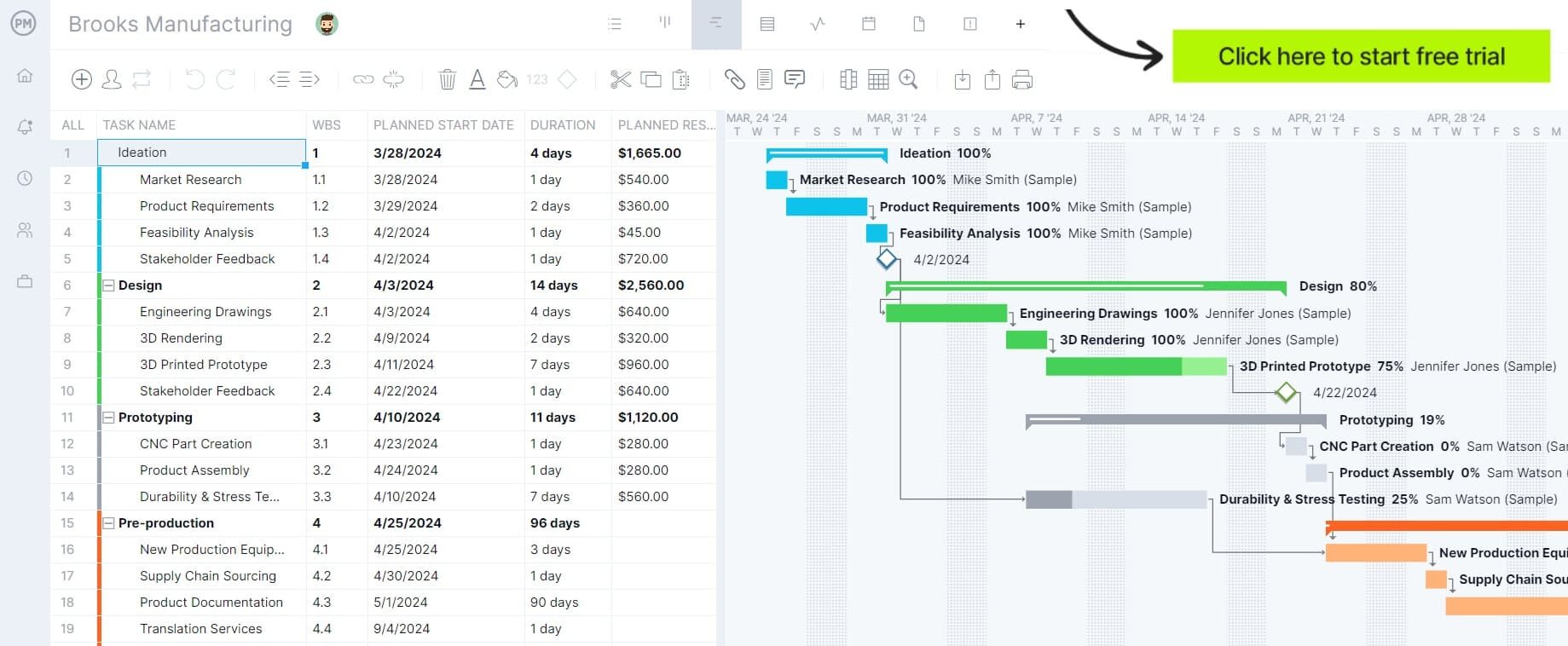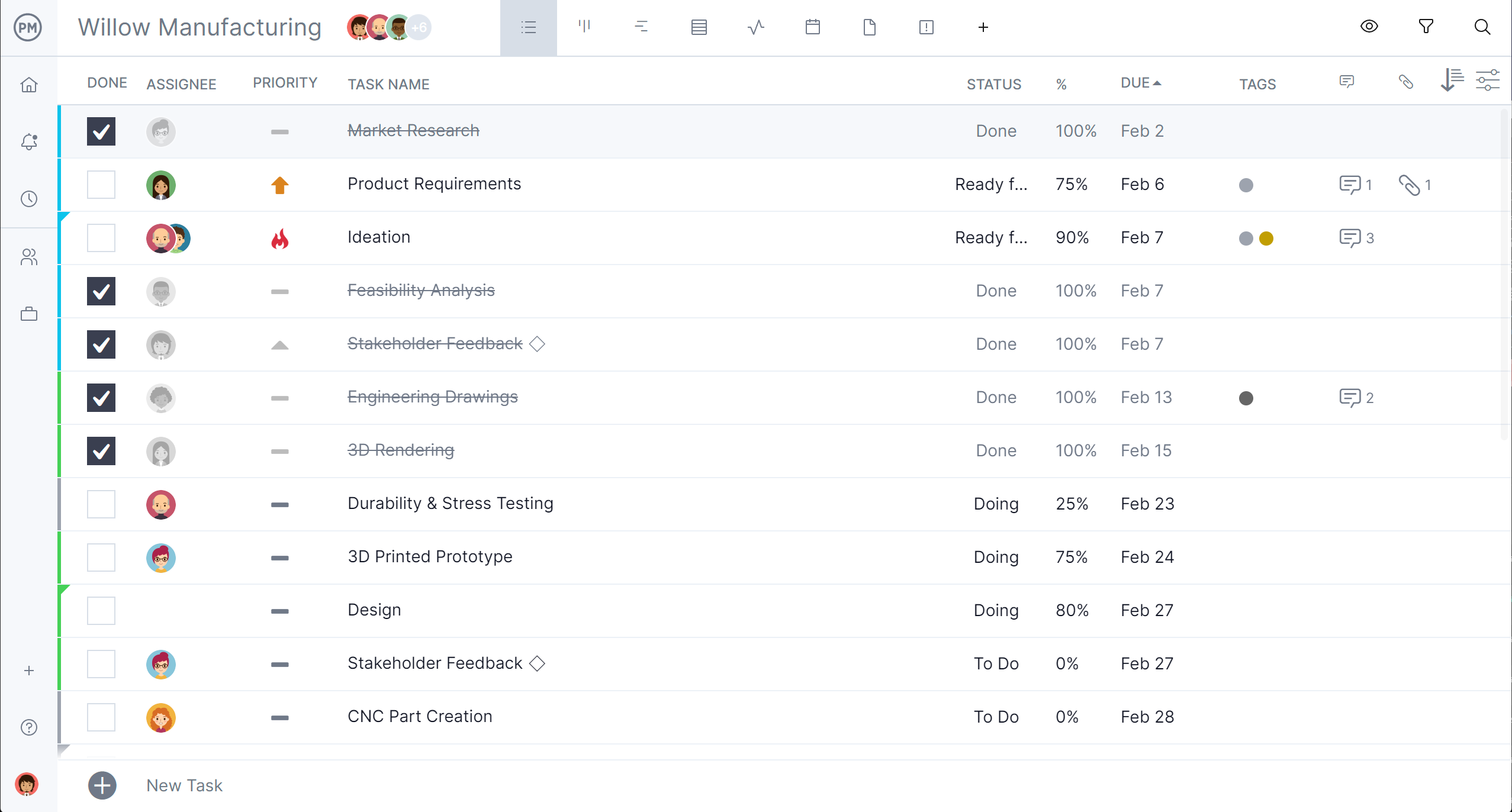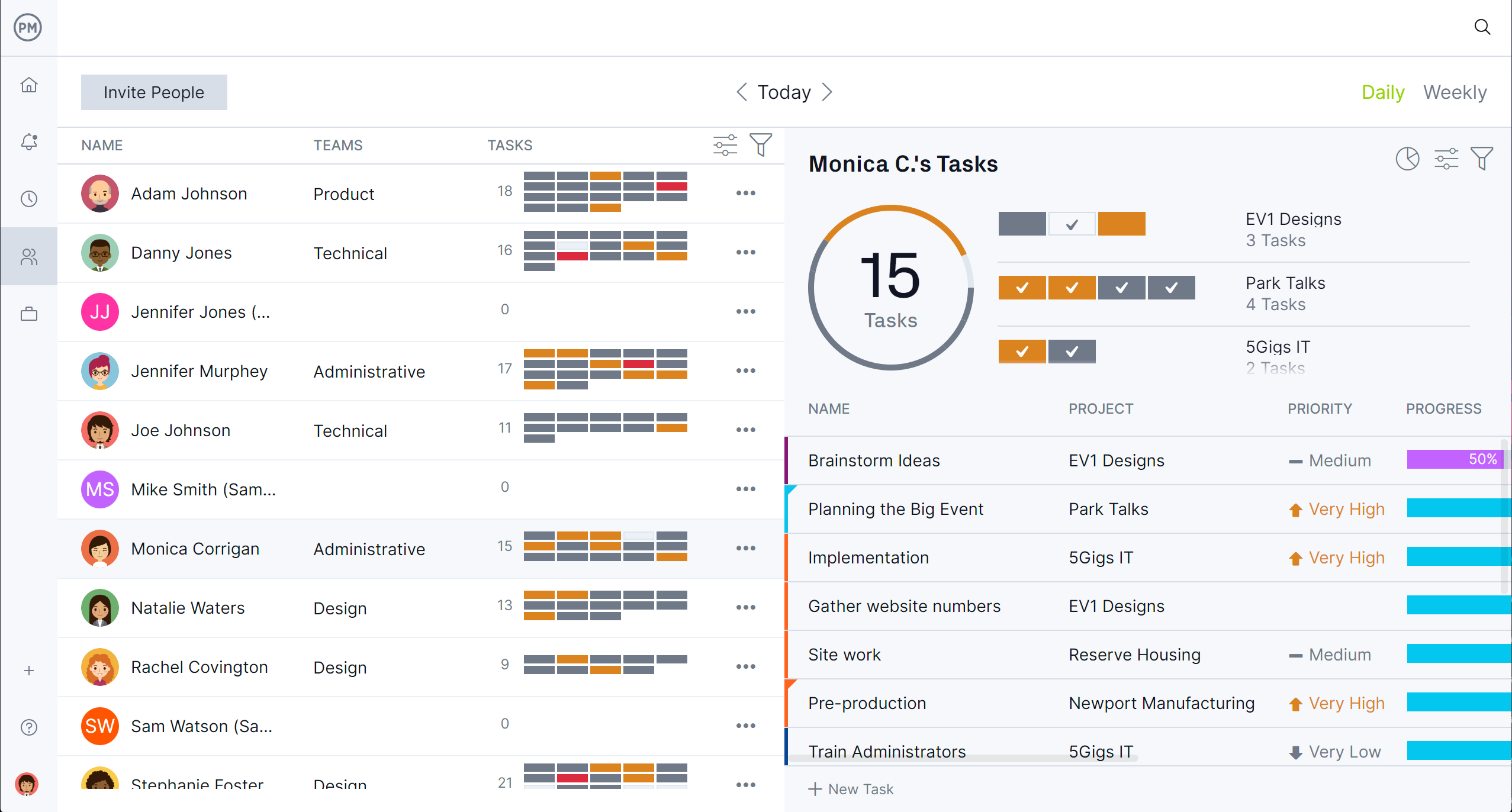Manufacturing productivity is the backbone of a company’s competitiveness and profitability. When production teams operate efficiently, businesses can meet customer demand more quickly, reduce costs, and maximize their return on investment. Every small gain in speed, resource use, and workflow optimization has a significant impact on output, making productivity one of the most important areas for manufacturers to focus on. Staying ahead in today’s global market requires constant improvement and the ability to adapt quickly to challenges on the shop floor.
For companies exploring how to improve productivity in manufacturing, the solution often lies in both strategy and technology. Strong leadership, well-trained employees and modern tools work together to eliminate bottlenecks and streamline processes.
By implementing targeted initiatives, managers can increase manufacturing productivity without sacrificing quality or safety. The following 12 tips provide actionable ways for manufacturers to discover how to increase productivity in manufacturing and build a foundation for long-term growth.
What Is Manufacturing Productivity?
Manufacturing productivity measures how efficiently a factory converts inputs like labor, materials and machinery into finished goods. High productivity means more output with the same or fewer resources, allowing companies to meet demand quickly while controlling costs.
Improving productivity isn’t just about working faster—it’s about optimizing workflows, reducing waste and ensuring that every step in the production process adds value. Companies that monitor and enhance manufacturing productivity can stay competitive and respond to changes in the market more effectively.
Manufacturing productivity also reflects the performance of teams, equipment and processes together. Metrics such as units produced per labor hour, machine uptime, and defect rates help managers identify where improvements are needed. By tracking these indicators consistently, businesses can pinpoint bottlenecks, improve resource allocation and implement process improvements. This approach ensures that efforts to increase manufacturing productivity are strategic rather than reactive, creating sustainable gains over time.
Project management software helps manufacturers improve productivity by centralizing planning, scheduling and resource tracking. Teams can assign tasks, monitor progress and adjust workflows in real time to reduce delays and bottlenecks. By providing visibility into production schedules, labor allocation and equipment usage, project management tools allow managers to make data-driven decisions that optimize processes. Automated notifications, progress tracking and reporting features ensure that everyone stays aligned, reducing downtime and increasing output without overburdening staff.
ProjectManager enhances manufacturing productivity through its intuitive Gantt charts, task lists, kanban boards, and real-time dashboards. The Gantt chart allows managers to visualize complex production schedules, track dependencies and quickly adjust timelines to prevent delays. Kanban boards and task lists make it easy for teams to prioritize work and manage daily operations efficiently, while dashboards provide live insights into resource utilization and production progress.
By combining these tools in a single platform, our software enables manufacturers to increase manufacturing productivity, streamline communication and maintain control over every stage of production. Get started with ProjectManager today for free

12 Tips to Increase and Improve Manufacturing Productivity
Improving manufacturing productivity requires a combination of process optimization, employee engagement and strategic planning. Manufacturers that focus on streamlining workflows, minimizing waste and tracking performance can increase output while maintaining quality and safety.
These 12 tips provide actionable guidance for managers and production teams to implement practices that boost efficiency and support long-term growth. By focusing on both operational and human factors, companies can create a more productive and resilient production environment.
1. Implement the 5S System (Sort, Set in Order, Shine, Standardize & Sustain)
The 5S system is a lean manufacturing technique designed to improve organization, efficiency and safety on the shop floor. By sorting items, arranging tools and materials in order, keeping areas clean, standardizing processes and sustaining improvements, teams can reduce wasted time and movement.
Implementing 5S creates a structured environment where employees know where to find resources, tasks are easier to complete and production flows more smoothly. Over time, it contributes to higher manufacturing productivity and a safer workplace while fostering a culture of continuous improvement and discipline.
2. Optimize Your Shop Floor Layout
An efficient shop floor layout reduces unnecessary movement, minimizes bottlenecks and increases workflow efficiency. Arranging machinery, workstations and storage areas to align with production processes ensures that materials and components move seamlessly from one stage to the next.
Optimized layouts also reduce travel time for employees and simplify supervision and quality control. By analyzing production patterns and designing the floor to match operational needs, manufacturers can boost output, shorten lead times and make it easier to maintain equipment and enforce safety protocols, directly improving manufacturing productivity.
Related: 12 Best Production Scheduling Software for Manufacturing Projects in 2025
3. Establish Standard Operating Procedures
Standard operating procedures (SOPs) provide clear instructions for every task and process on the shop floor. SOPs ensure that all employees follow the same steps, reducing variability and errors that can slow production. They also make training new staff faster and more consistent, allowing teams to maintain high performance levels even with turnover.
By documenting best practices and process flows, managers can monitor compliance, identify areas for improvement and maintain consistent quality. SOPs are essential for sustaining efficiency, minimizing waste and increasing manufacturing productivity over time.
Related: Free Standard Operating Procedure Template
4. Monitor and Balance the Employee’s Workload
Balancing workloads ensures that no employee is overburdened while others are underutilized, which can negatively impact production efficiency. Monitoring task assignments and adjusting responsibilities based on skills and capacity prevents bottlenecks and idle time.
Workload charts and project management tools allow supervisors to allocate labor effectively, track progress and quickly address any imbalances. A well-distributed workload improves employee morale, reduces errors caused by fatigue, and ensures that production goals are met consistently, contributing to sustained manufacturing productivity.

5. Track Production Key Performance Indicators
Monitoring key performance indicators (KPIs) gives managers visibility into production efficiency, quality and overall performance. KPIs such as output per hour, defect rates, machine uptime and cycle times help identify bottlenecks and areas for improvement. Regularly reviewing these metrics enables informed decision-making and timely interventions to prevent delays.
Tracking KPIs also allows teams to benchmark progress, set realistic goals and continuously optimize processes. When production KPIs are clearly defined and monitored, manufacturers can systematically increase manufacturing productivity and ensure operational excellence.

Get your free
Production Schedule Template
Use this free Production Schedule Template to manage your projects better.
Get the Template
6. Reduce Waste
Eliminating waste in all forms—material scrap, excess motion, waiting time and overproduction—is critical for improving manufacturing productivity. Lean practices, such as value stream mapping and continuous improvement initiatives, help identify inefficiencies and remove unnecessary steps.
Reducing waste not only lowers costs but also speeds up production cycles and improves product quality. Employees trained to recognize and minimize waste can contribute to a culture of efficiency. Consistent waste reduction ensures that resources are used optimally and production targets are met more reliably.
7. Establish a Preventive Maintenance Schedule to Minimize Machinery Downtime
Preventive maintenance helps keep equipment running efficiently and reduces unexpected breakdowns that can halt production. Scheduling regular inspections, lubrication, calibration and part replacements prevents costly downtime and extends the life of machinery. A proactive maintenance approach ensures that machines operate at peak performance, which improves cycle times and output quality.
Integrating maintenance schedules into production planning allows teams to anticipate downtime and avoid disruptions. Well-maintained equipment is a cornerstone of manufacturing productivity and operational reliability.

8. Reduce Changeover Time
Minimizing the time required to switch between production runs increases overall output and efficiency. Techniques like SMED (Single-Minute Exchange of Dies) streamline setup procedures, allowing machines to be reconfigured quickly without extensive downtime.
Standardizing tools and parts for changeovers, training employees on best practices and using project management tools to plan transitions can significantly reduce delays. Faster changeovers enable more flexible production schedules, increase capacity utilization and contribute to higher manufacturing productivity by maximizing active production time.
9. Implement Just-In-Time Inventory Management
Just-In-Time (JIT) inventory management ensures that materials and components arrive exactly when needed, reducing storage costs and minimizing waste. By coordinating supplier deliveries with production schedules, manufacturers can maintain optimal inventory levels and prevent bottlenecks caused by shortages or overstocking.
JIT improves cash flow, frees up storage space and increases operational efficiency. When production materials are managed efficiently, teams can focus on output without interruption, helping to increase manufacturing productivity and streamline operations across the shop floor.
10. Develop an Accurate Customer Demand Forecasting and Planning Process
Accurate demand forecasting allows manufacturers to align production schedules with customer orders, reducing excess inventory and ensuring timely fulfillment. Using historical data, market trends and predictive analytics helps create realistic production targets. Effective planning ensures resources, labor and materials are available when needed, minimizing idle time and production delays.
By anticipating demand accurately, companies can optimize workflows, reduce overproduction and maintain consistent output. Strong forecasting practices directly contribute to higher manufacturing productivity and customer satisfaction.
11. Monitor Production Capacity
Keeping track of production capacity ensures that machines, labor and materials are used efficiently. Monitoring utilization rates and workload distribution allows managers to adjust schedules and resources to meet production targets. Real-time tracking can identify underused equipment or overburdened employees, enabling corrective actions before productivity drops.
Capacity monitoring supports better planning, reduces bottlenecks and ensures consistent output. By understanding production limits and optimizing resource allocation, manufacturers can increase manufacturing productivity while maintaining quality and reliability.
12. Offer Incentives to Employees to Reduce Scrap Rate and Defects
Incentive programs motivate employees to focus on quality and efficiency, helping to minimize scrap and defects. Rewards for meeting production targets, reducing errors or suggesting process improvements encourage active engagement and accountability. Recognition programs foster a culture of continuous improvement and empower workers to take ownership of their performance.
When employees are motivated to produce high-quality products efficiently, overall manufacturing productivity improves. Aligning incentives with measurable production goals ensures that both individual and team efforts contribute to consistent, high-performing operations.
Free Production Management Templates
Using project management templates can simplify production management by providing pre-designed frameworks for planning, tracking and optimizing manufacturing processes. These templates help teams stay organized, monitor performance and improve efficiency without starting from scratch, saving time and reducing errors.
Production Schedule Template
Download this free template to help managers plan and track production activities, deadlines and resource allocation. It ensures that all tasks are scheduled efficiently, reducing downtime and helping teams meet production targets consistently.
Inventory Template
Use this free inventory template to track raw materials, work-in-progress and finished goods. It helps maintain optimal stock levels, avoid shortages or overstocking and improve supply chain efficiency.
Maintenance Schedule Template
This free template organizes preventive and corrective maintenance tasks for machinery and equipment. By planning maintenance activities, manufacturers can reduce downtime, extend equipment life and maintain consistent production productivity.
How ProjectManager Helps to Improve Manufacturing Productivity
ProjectManager is designed to help manufacturing teams streamline operations, allocate resources effectively and track production progress in real time. By providing visibility into workflows and task assignments, it allows managers to identify bottlenecks, optimize processes and ensure that production targets are met consistently.
The software’s flexibility and comprehensive toolset make it an essential platform for manufacturers looking to increase productivity without compromising quality or safety. Learn more about how our software can support manufacturing projects below.
Use Multiple Project Views
ProjectManager offers multiple project views, including task lists, kanban boards and calendars, to suit different team workflows. Task lists provide a clear overview of all production activities, while kanban boards help teams visualize the flow of tasks and identify bottlenecks.
Calendar views allow managers to monitor schedules and deadlines at a glance, ensuring alignment across shifts and production lines. By enabling teams to work in the view that fits their needs, our software reduces miscommunication, improves task tracking and supports continuous productivity improvements on the shop floor.

Manage Manufacturing Resources
Resource management features help manufacturers allocate staff, equipment and materials efficiently. Workload charts show which employees or machines are over- or under-utilized, allowing managers to balance tasks and prevent delays. Budget and cost tracking tools provide insight into labor and material expenses, ensuring that projects stay within financial targets.
By integrating resource allocation with task scheduling, our software ensures that every element of production is optimized, boosting overall manufacturing productivity and making operations more predictable and efficient.

Related Manufacturing Content
Now that you’ve learned how to increase productivity, those who care to delve further into manufacturing, check out the handful of recently published articles below. There are pieces on manufacturing operations, calculating cycle time and much more.
- Manufacturing Operations Management Explained
- What Is Lean Manufacturing? Definitions, Principles & Techniques
- How to Calculate Manufacturing Cycle Time
- Manufacturing Overhead: Definition, Formula and Examples
- Quality Control in Manufacturing: Types, Tools & Process
ProjectManager is online project and portfolio management software that connects teams, whether they’re in the office or on the shop floor. They can share files, comment at the task level and stay up to date with email and in-app notifications. Join teams at Avis, Nestle and Siemens who use our software to deliver successful projects. Get started with ProjectManager today for free.

